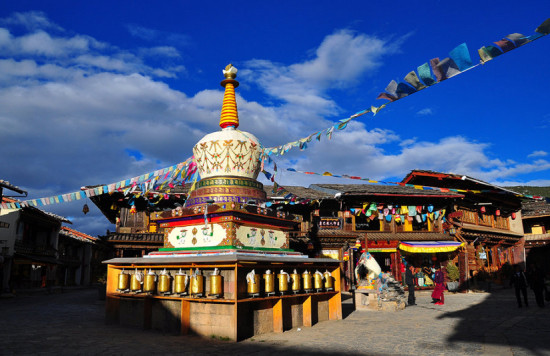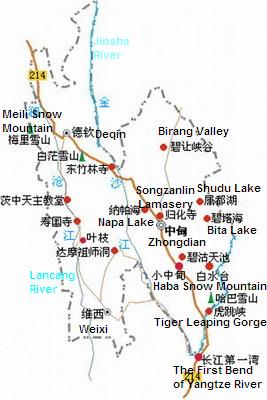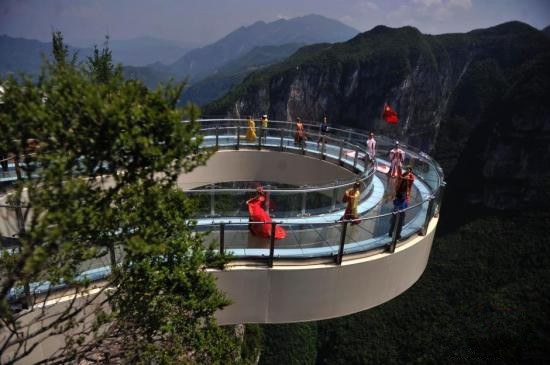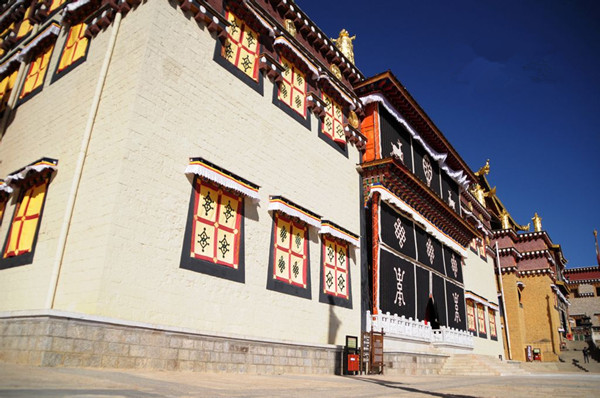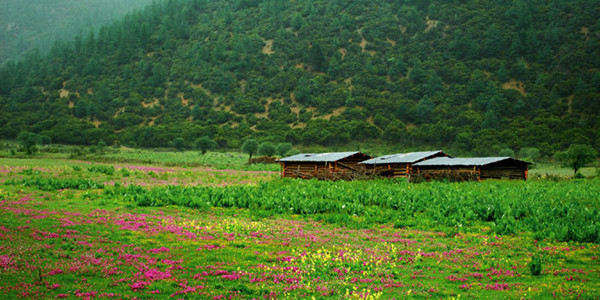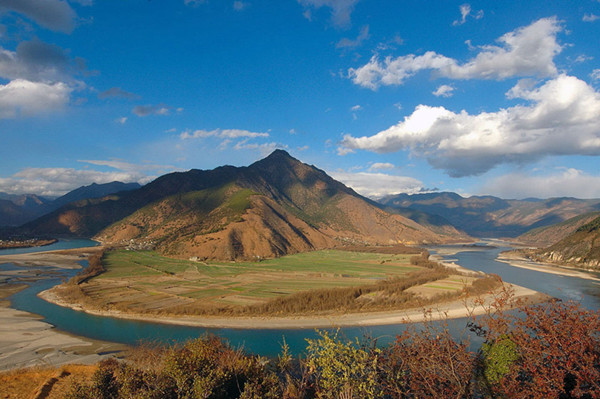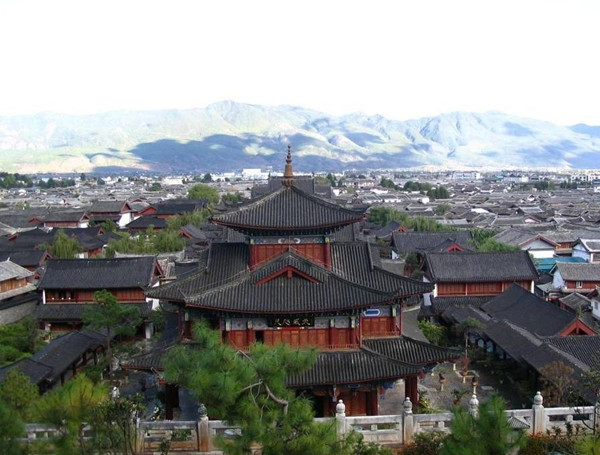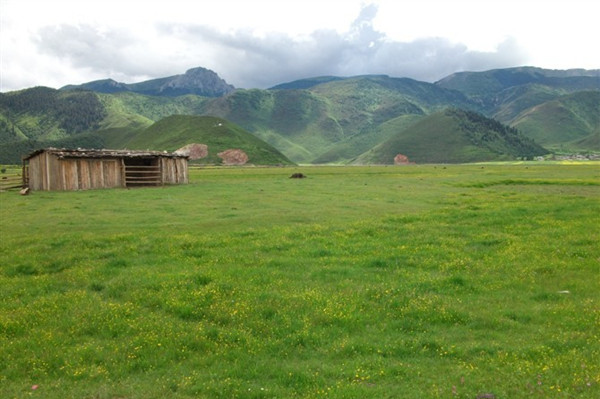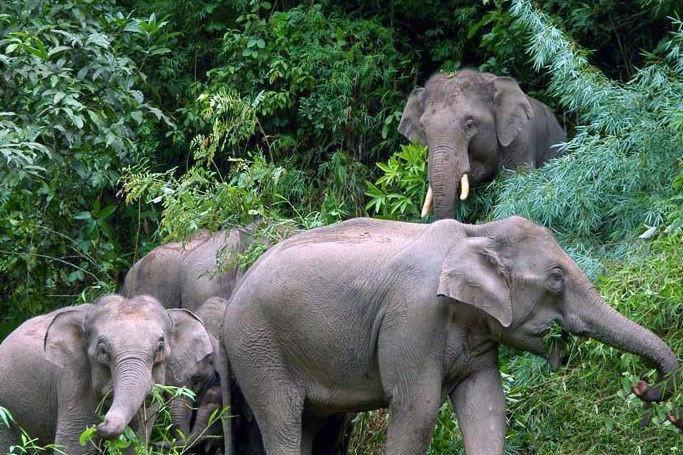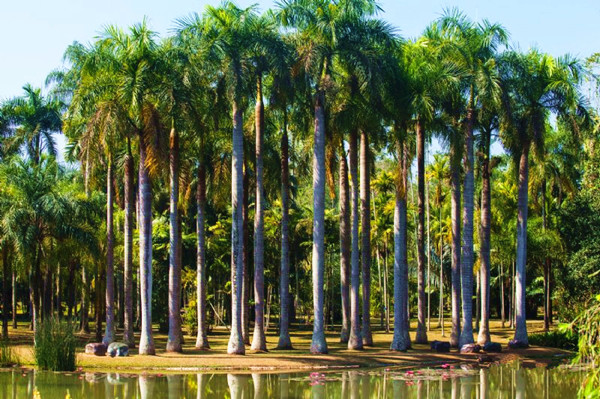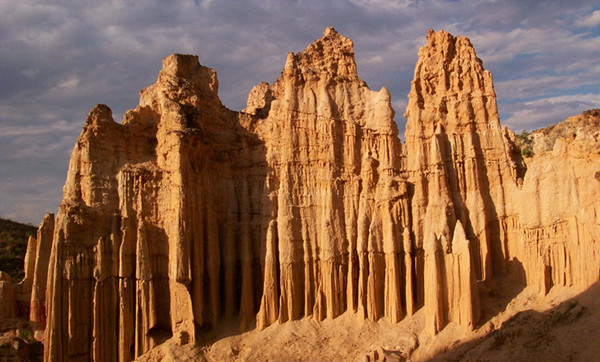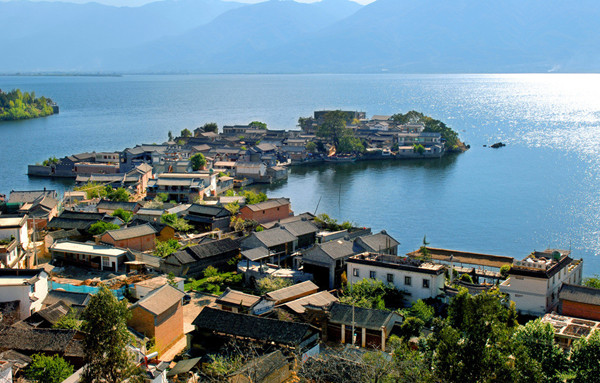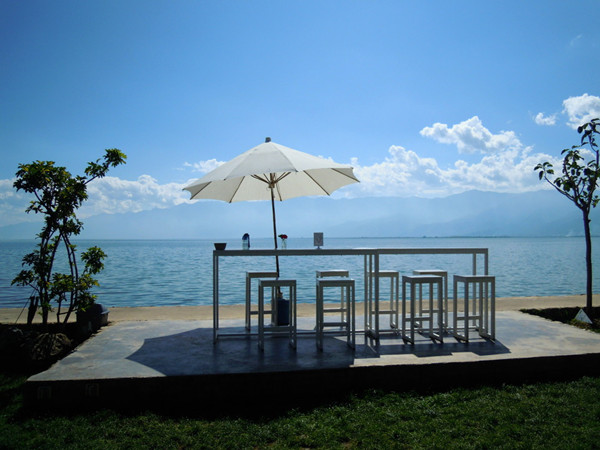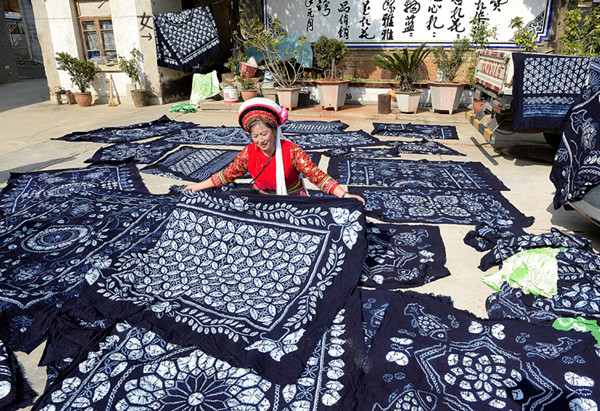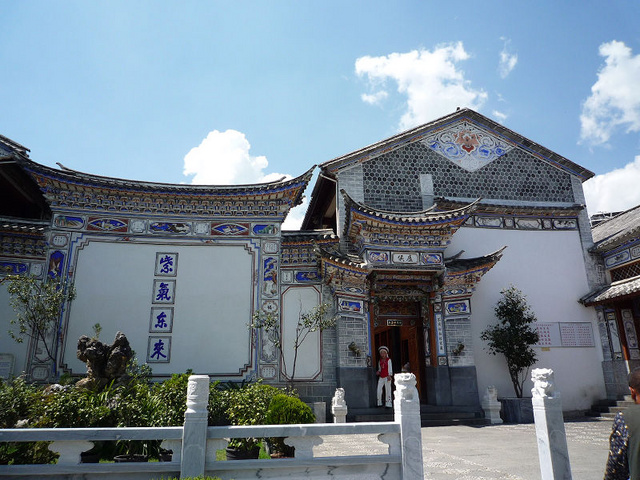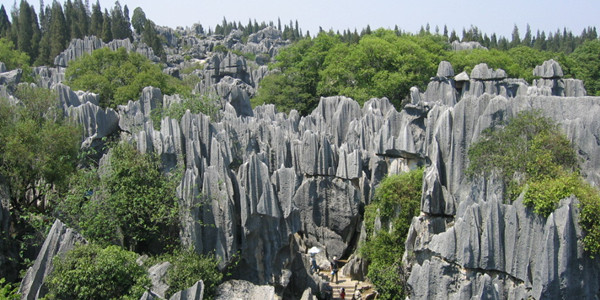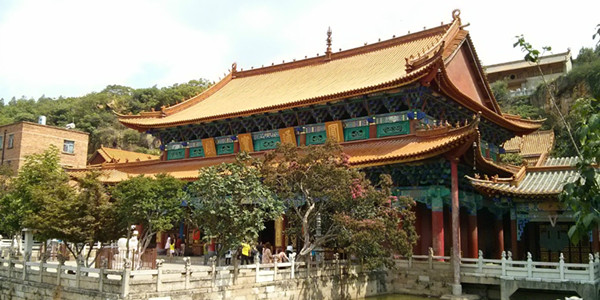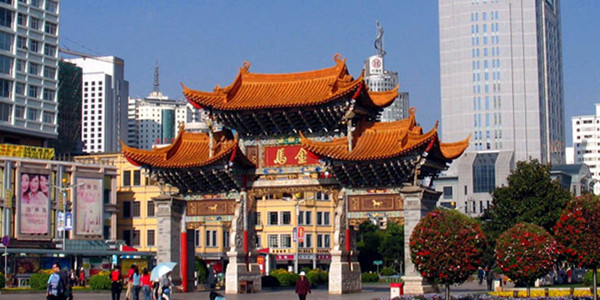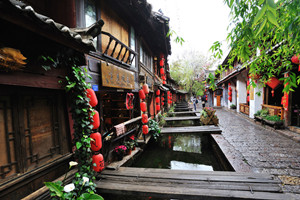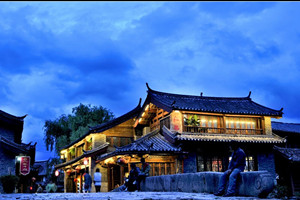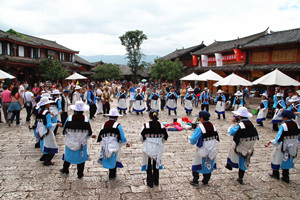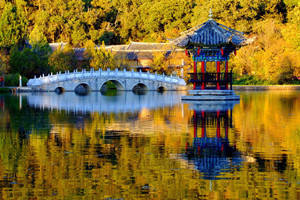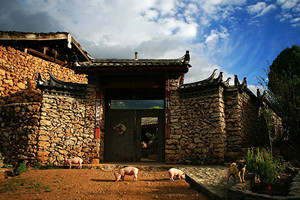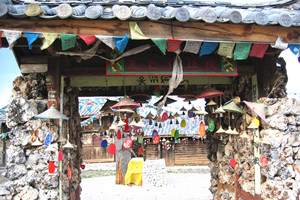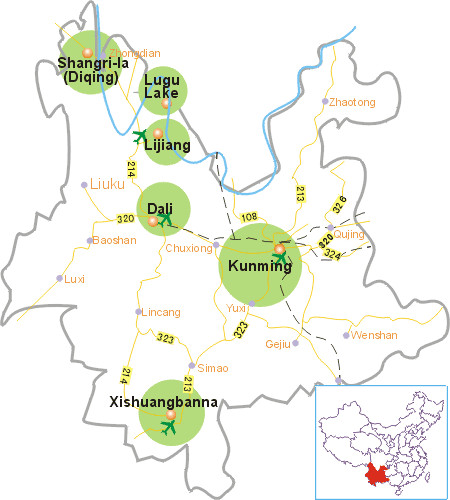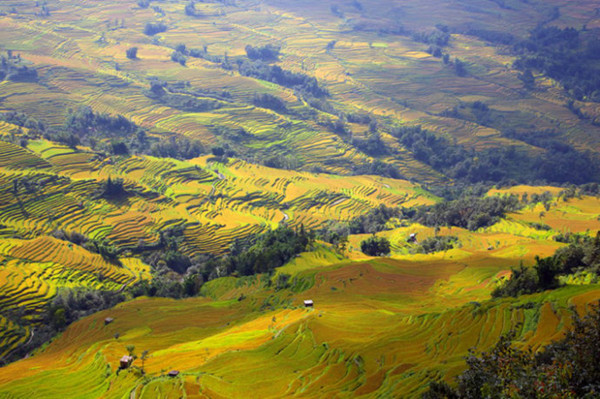Lijiang is located in the northwest of Yunnan Province. It is located in the conjunction of Qinghai-Tibetan Plateau and Yunnan-Guizhou Plateau. The average temperature of the year is 12.6℃~19.8℃. The hottest month is 18.1~25.7℃ and the coldest month is 4~11.7℃. There is no severe weather in Lijiang. The year of Lijiang can be divided into dry season and rainy season. Rainy season lasts from May to October. It rains a lot in July and August.
The city is famous for its ancient town – Lijiang Old Town, which is inscribed as a World Heritage by UNESCO in the year of 1997. Lijiang Old Town, also known as Dayan Old Town, is one of the best preserved ancient towns in China. The town was first built in the end of Song Dynasty and the beginning of Yuan Dynasty in the 13th century. It has a history of nearly one thousand years. The old town has become a popular tourist destination ever since.
| Lijiang Old Town |
Jade Dragon SnowMountain |
Lugu Lake |
 |
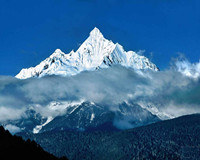 |
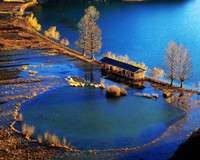 |
| Shuhe Old Town |
Baisha Village & Murals |
Wangu Pavilion |
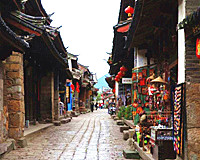 |
 |
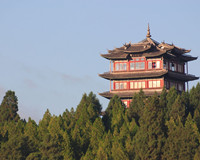 |
Recommended Lijiang local tours:
1 Day Jade Dragon Snow Mountain Tour, from $173
1 Day Lijiang City and the Ancient Culture Tour, from $95
4 Days 3 nights Lijiang tour(Lijiang,Baisha,Jade Dragon Snow Mountain, Lugu Lake), from $633
8 Days Kunming-Dali-Lijiang-Shangri-la Essence Tour, from$1572 >>more local tours
Getting Lijiang and Away
Flights and trains are available in Lijiang.
Lijiang Sanyi Airport is located 28 kilometers south of Lijiang downtown. There have been flights available between Lijiang and Kunming, Banna, Beijing, Shanghai, Guangzhou, Chengdu, Shenzhen, Guiyang and etc.
Airport buses are available between the airport and the downtown. Tourists who would like to arrive at Lijiang Old Town could take a taxi directly from the airport , costing about CNY100.
Book a Flight Ticket
Lijiang Train Station is located in the south of Lijiang downtown. Trains are available between Lijiang and Kunming, Dali, Qujing. Therefore, most tourists would like to arrive at Kunming first and then take a train from Kunming to Lijiang. There are 6 trains available between Kunming and Lijiang. Book a Train Ticket
Long-distance bus
Long-distance buses are available between Lijiang and Kunming, Shangri-La, Chengdu, Xichang, Zhongdian, Deqin, Panzhihua and etc.
Local transportation
Taxi
The starting price is CNY7. Usually, it is enough for the downtown. However, most taxis do not run meters. Therefore, it’s best to make a deal before getting on the taxi.
Public bus
Ticket fare: CNY1
Lijiang Food
Lijiang food is mainly based on Naxi cuisine. There are also many restaurants of Sichuan flavour. Square Street is the most famous street with many kinds of snacks. Baba is a kind of cake made from flour, ham and sugar or salt. Bean jelly mixed with pepper and vinegar is also a popular food. Rice noodle, a local snack in Yunnan, is a must for whoever come to Yunnan. Hot pot is also a good choice and there are several kinds of chicken, pork ribs, mutton etc.
Lijiang Hotel
As a popular tourist destination, there are a lot of hotels of different star-rates. Book a Lijiang hotel
Lijiang Travel
